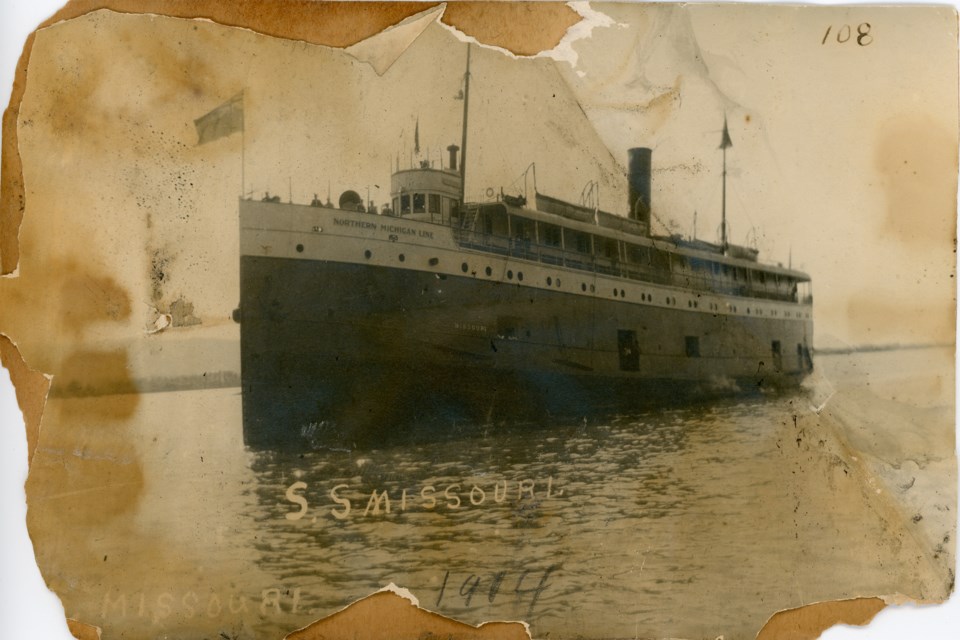Today’s Remember This feature showcases the steamer Missouri in Collingwood’s harbour in 1914. The distinctive line of the Niagara Escarpment appears on the ship’s starboard side. The stretch of land along its stern is believed to be today’s Hen and Chickens walking trail.
In a previous Remember This feature, Collingwood's museum shared photos of passengers who arrived on the Missouri to Collingwood's wharf.
The photograph’s poor condition begs numerous questions about its life before and during its time in the Huron Institute’s collection. As Collingwood’s original museum suffered a fire in 1963, it’s possible that the photograph’s severe warping and discolouration are results of this traumatic event.
Unlike the photographs in previous Remember This articles, the Missouri is not printed on a postcard backing. Instead, it’s printed on photographic paper that has been adhered to a cardstock backing for support. It’s also quite larger than previous photographs, measuring eight inches by five inches.
Missouri was operating under the Northern Michigan Line when this photograph was taken. She later served under the Michigan Transport Co. (1918-1926), Warren A. Cartier (1926-1932), Milwaukee Boat Co. (1932-1933), Wisconsin and Michigan Steamship Co. (1933-1936), and Sand Products Corp. (1936-1947). She was scrapped in Hamilton, Ontario, by the Steel Co. of Canada, Ltd. in 1947. No name changes are recorded.
If you have any information about the Missouri’s travels to and from Collingwood, please contact Collingwood Museum staff.
Remember This is a weekly series of historic photographs submitted by the Collingwood Museum to CollingwoodToday.ca. These photographs were originally collected and documented by the Huron Institute in an historical catalogue entitled Huron Institute Paper and Records: Volume III. Much of Collingwood’s early history has been preserved due to the dedication and foresight of the early museum’s founders, namely its secretary-curator David Williams, upon its establishment in 1904.

